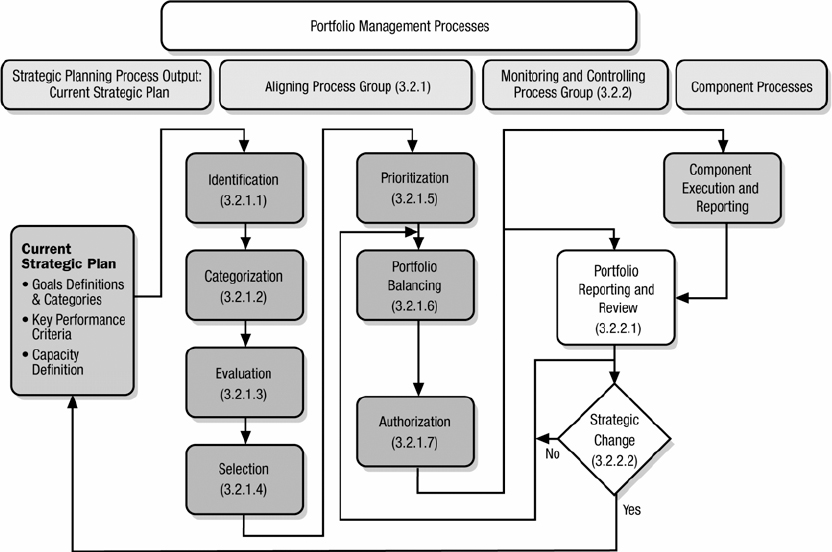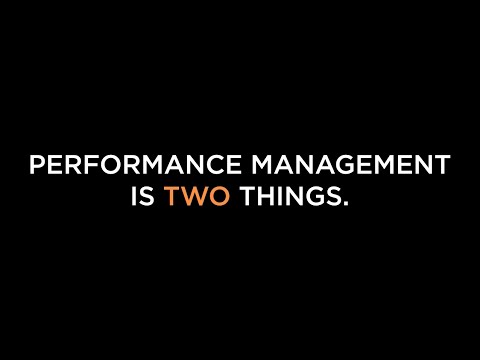Contents:


A https://1investing.in/ average simplifies price data by smoothing it out and creating one flowing line. Exponential moving averages react quicker to price changes than simple moving averages. In some cases, this may be good, and in others, it may cause false signals. Moving averages with a shorter look-back period will also respond quicker to price changes than an average with a longer look-back period . For example, if the 20-day simple moving average indicator is added to a chart, it will calculate the average price over the previous 20 days. The indicator updates itself at every candlestick and creates a line that goes up and down on the chart, showing the overall flow of where the market is going.
The Six-Week Checkup: The Indicators Budge, SOX Drop, Banks … – RealMoney
The Six-Week Checkup: The Indicators Budge, SOX Drop, Banks ….
Posted: Wed, 26 Apr 2023 10:00:00 GMT [source]
5-, 8- and 13-bar SMAs shows similar whipsaws, with multiple crossovers but little alignment between moving averages. These high noise levels warn the observant day trader to pull up stakes and move on to another security. In financial markets, analysts and investors use the SMA indicator to determine buy and sell signals for securities. The SMA helps to identify support and resistance prices to obtain signals on where to enter or exit a trade. A five-day simple moving average adds up the five most recent daily closing prices and divides the figure by five to create a new average each day. Each average is connected to the next, creating the singular flowing line.
MACD Indicator Explained, with Formula, Examples, and Limitations
The true strength index is a momentum oscillator used to provide trade signals based on overbought/oversold levels, crossovers, and divergence. MACD is a valuable tool of the moving-average type, best used with daily data. Investors following MACD crossovers and divergences should double-check with the ADX before making a trade on an MACD signal. The moving average convergence/divergence (MACD, or MAC-D) line is calculated by subtracting the 26-period exponential moving average from the 12-period EMA. Apple stock consolidates near $109 at the end of a session and ticks lower the next morning .
Rare bullish stock market indicator flashes for first time since 2019 – Markets Insider
Rare bullish stock market indicator flashes for first time since 2019.
Posted: Mon, 10 Apr 2023 07:00:00 GMT [source]
Typically any period under 20 days would be considered short term, anything between 20 and 60 would be medium term and of course anything longer than 60 days would be viewed as long term. Moving Average is mainly used for identifying the trend of any financial securities rather than giving trading signals as it is a lagging indicator. As with the other technical indicators, moving averages should also be used with other technical tools like price action or momentum indicators. Exponential moving averages reduce the lag by applying more weight to recent prices. The weighting applied to the most recent price depends on the number of periods in the moving average. EMAs differ from simple moving averages in that a given day’s EMA calculation depends on the EMA calculations for all the days prior to that day.
Since moving averages are lagging indicators, they shouldn’t be misinterpreted as tools that can predict future price movements with any degree of resolution. As with the DEMA, a longer period TEMA may be needed, even if the trader is primarily focussed on short tern trading, as there are likely to be multiple false signals in ranging markets. Some traders will look for bullish divergences even when the long-term trend is negative because they can signal a change in the trend, although this technique is less reliable. The chart shows that the trend began moving higher after May of 2020 and into 2021. The price of Google shares fell below the 50-day moving average a few times and broke above the 50-day on five major moves .
This type of moving average might be more useful for short-term traders for whom longer-term historical data might be less relevant. A simple moving average is calculated by averaging a series of prices while giving equal weight to each of the prices involved. It is common for traders to make use of multiple moving average indicators on a single chart, as depicted in the chart below.
Why Use a Moving Average
You can use the moving average to recognise and determine potential trend directions or periods of flat market when the prices don’t fluctuate. Moreover, you can determine the support and resistance levels and define your entry or exit strategy as a complement with other indicators. Although you can find different types of moving averages indicators, the two widely used are simple moving average and exponential moving average.
Investors may choose different periods of varying lengths to calculate moving averages based on their trading objectives. Shorter moving averages are typically used for short-term trading, while longer-term moving averages are more suited for long-term investors. When you use different indicators while creating your trading strategy, you should make sure that the indicators capture multiple areas such as the trend, momentum, volatility, etc. Accordingly, the moving average as a trend indicator can be combined with indicators that identify signals through the momentum or the volatility of a price. For example, when the prices are above the weighted moving average, then it signals that the trend is an uptrend. By default, both moving average overlays use 20 periods, but this parameter can be adjusted to meet your technical analysis needs.
The golden cross occurs when a short-term SMA breaks above a long-term SMA. Reinforced by high trading volumes, this can signal further gains are in store. The moving average is a simple technical analysis tool that smooths out price data by creating a constantly updated average price. The average is taken over a specific period of time, like 10 days, 20 minutes, 30 weeks, or any time period the trader chooses.
- An EMA may work better in a stock or financial market for a time, and at other times, an SMA may work better.
- Chartists interested in medium-term trends would opt for longer moving averages that might extend periods.
- As long-term indicators carry more weight, the golden cross indicates abull marketon the horizon and is reinforced by high tradingvolumes.
- The default time period is 14 periods with values bounded from 0 to 100.
- In addition to analyzing individual moving average lines on the ribbon, chartists can glean information from the ribbon itself.
- The buy and sell signals are the same as with other MAs with the same pros and cons as with all Moving Averages.
Simply copy the scan text and paste it into the Scan Criteria box in the Advanced Scan Workbench. Both Simple and Exponential Moving Average overlays can be added from the Chart Settings panel for your StockChartsACP chart. Moving Averages can be overlaid on the security’s price plot or on an indicator panel. The candle on which this change is confirmed will be the one correspondent to the crossover.
What Are Moving Averages Used for?
When examining some of these common uses for calls from your own phone number Averages, keep in mind that that it is the trader’s discretion which Moving Average in particular they wish to use. In the following examples, there will be written instances of; Moving Averages , Simple Moving Averages , Exponential Moving Averages and Weighted Moving Averages . Unless otherwise specified, these indicators can be considered interchangeable in terms of the governing principles behind their basic uses. An exponential moving average is a type of moving average that places a greater weight and significance on the most recent data points. In the figure below, the number of periods used in each average is 15, but the EMA responds more quickly to the changing prices than the SMA.
Apple: Don’t Give Up Because Of Valuation, Look Long Term (TA … – Seeking Alpha
Apple: Don’t Give Up Because Of Valuation, Look Long Term (TA ….
Posted: Sat, 22 Apr 2023 13:44:50 GMT [source]
An EMA may work better in a stock or financial market for a time, and at other times, an SMA may work better. The time frame chosen for a moving average will also play a significant role in how effective it is . As a general guideline, if the price is above a moving average, the trend is up.
What Are Some Examples of Moving Averages?
It also has the option to show the a 14 period average distance between the closing price of an asset and… There is also a triple crossover method that involves three moving averages. Again, a signal is generated when the shortest moving average crosses the two longer moving averages. A simple triple crossover system might involve 5-day, 10-day, and 20-day moving averages. Because of its length, this is clearly a long-term moving average. Next, the 50-day moving average is quite popular for the medium-term trend.

As each new day ends, the oldest data point is dropped and the newest one is added to the beginning. The calculation for EMA puts more emphasis on the recent data points. Because of this, EMA is considered a weighted average calculation. The process is repeated everyday, which gives us a long line on the chart – along with a clear indication on how the price is moving.
The chart shown below shows the application of a MA crossover system with 50 and 100 days EMA. As you can see, the black 50 day EMA line is closer to the current market price compared to the pink 100 days EMA . The key to MA trading system is to take all the trades and not be judgmental about the signals being generated by the system. A displaced moving average is a moving average that has been adjusted forward or back in time in an attempt to better analyze an asset. Charting software and trading platforms do the calculations, so no manual math is required to use a moving average.
All contents on this site is for informational purposes only and does not constitute financial advice. Consult relevant financial professionals in your country of residence to get personalised advice before you make any trading or investing decisions. Daytrading.com may receive compensation from the brands or services mentioned on this website. The 100-period would be considered slow relative to the 50-period but fast relative to the 200-period. Above is an example of a 50-period SMA plotted on a daily chart of the S&P 500.
Both of these indicators react only to what has already happened and are not designed to make predictions. A system like this one definitely works best in a very strong trend. While in a strong trend, this system or a similar one can actually be quite valuable. While it is impossible to predict the future movement of a specific stock, using technical analysis and research can help make better predictions.
What is a Moving Average?
The third day of the moving average continues by dropping the first data point and adding the new data point . In the example above, prices gradually increase from 11 to 17 over a total of seven days. Notice that the moving average also rises from 13 to 15 over a three-day calculation period. Also, notice that each moving average value is just below the last price. For example, the moving average for day one equals 13 and the last price is 15. Prices the prior four days were lower and this causes the moving average to lag.
The longer moving average sets the tone for the bigger trend and the shorter moving average is used to generate the signals. One would look for bullish price crosses only when prices are already above the longer moving average. For example, if price is above the 200-day moving average, chartists would only focus on signals when price moves above the 50-day moving average. Obviously, a move below the 50-day moving average would precede such a signal, but such bearish crosses would be ignored because the bigger trend is up. A bearish cross would simply suggest a pullback within a bigger uptrend. A cross back above the 50-day moving average would signal an upturn in prices and continuation of the bigger uptrend.
This bearish cross did not last long as the 10-day EMA moved back above the 50-day a few days later . After three bad signals, the fourth signal foreshadowed a strong move as the stock advanced over 20%. The longer the moving average periods, the greater the lag in the signals. However, a moving average crossover system will produce lots of whipsaws in the absence of a strong trend. The length of the moving average depends on the trader’s time horizon and analytical objectives. Short moving averages (5-20 periods) are best suited for short-term trends and trading.
However, this indicator can be applied to other types of price data , volume data, or even other indicators. The example below shows a chart with a 50-day SMA applied to the volume bars, and a 20-day EMA applied to the RSI indicator. Traders will pay attention to both the direction of the moving average as well as its slope and rate of change. Trend changes and momentum shifts can be easily picked up in moving averages and can often be seen more easily than by looking at price candlesticks alone. The simple moving average and the exponential moving average are the two most common types of the indicator.

When MACD forms a series of two falling highs that correspond with two rising highs on the price, a bearish divergence has been formed. A bearish divergence that appears during a long-term bearish trend is considered confirmation that the trend is likely to continue. MACD measures the relationship between two EMAs, while the RSI measures price change in relation to recent price highs and lows. These two indicators are often used together to give analysts a more complete technical picture of a market. Conversely, a stock’s 50-day cross below its 200-day MA can signal a downtrend and is often called the death cross.

Recent Comments